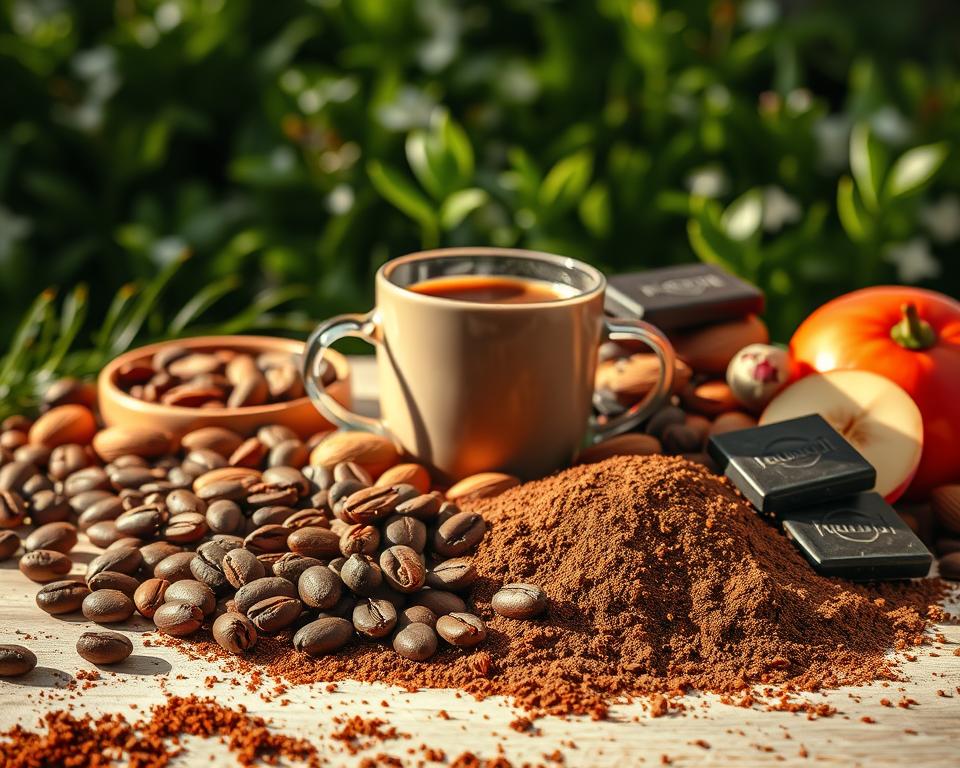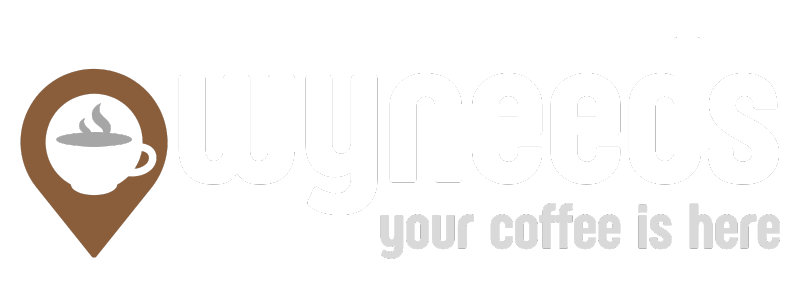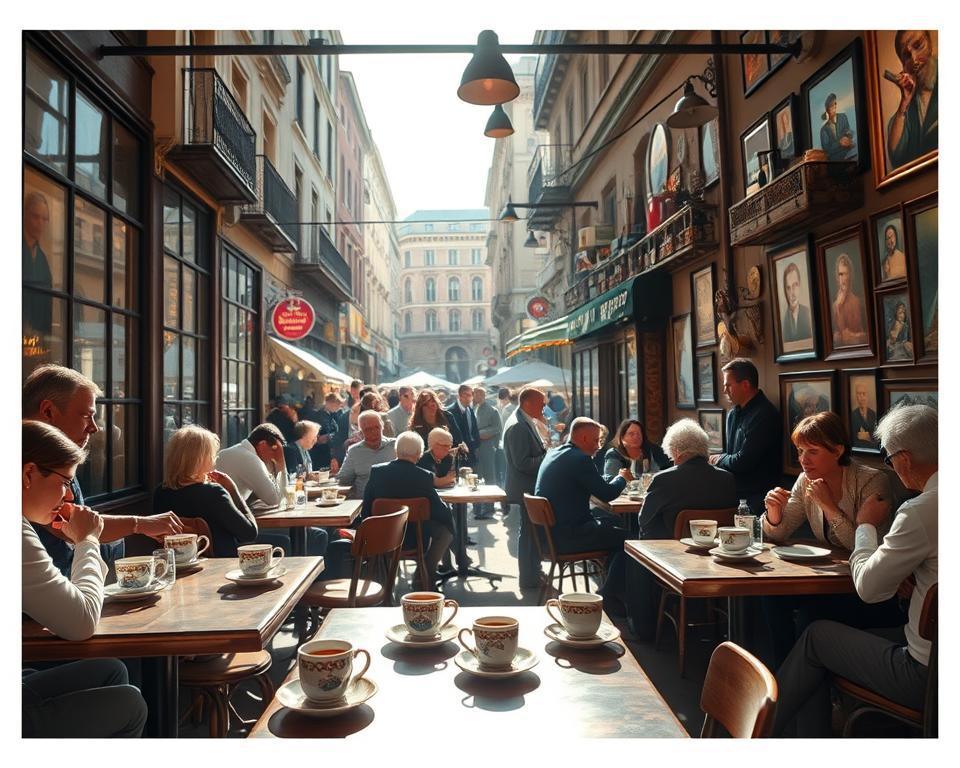Coffee transcends its role as a morning energizer, weaving a global narrative. In the U.S., 400 million cups are savored daily. Brazil, the leading producer, accounts for 37% of the world’s coffee. From Ethiopia’s ancient coffee rituals to Italy’s vibrant espresso culture, coffee has deeply influenced traditions for millennia. Today, the global coffee market surpasses $100 billion, yet its cultural significance extends far beyond financial metrics.
In Finland, residents consume an astonishing 12 kilograms of coffee per person annually. Ethiopia’s Oromo communities celebrate coffee’s discovery with elaborate, two-hour rituals. Japan, too, sees baristas meticulously perfecting each pour, often paired with desserts. This journey from bean to cup showcases how coffee is deeply intertwined with identity, from Turkish cezve brews to Vietnamese coffee with condensed milk.
Key Takeaways
- Coffee drives a $200 billion global economy, employing 25 million people.
- Ethiopia’s coffee ceremonies and Brazil’s cafézinho highlight regional traditions.
- Third Wave Coffee boosted specialty consumption by 25% in recent years.
- Italy’s 150,000 espresso bars reflect its deep-rooted café culture.
- Coffee’s caffeine range—30 to 300 mg per cup—varies by brewing methods worldwide.
The Rich History of Coffee in Different Cultures
From Ethiopia’s misty highlands to bustling European coffeehouses, coffee has shaped global traditions for centuries. Its journey began in Ethiopia, where legend says a goat herder noticed his goats’ energy after eating coffee cherries. Today, over 1 billion people savor this beverage daily, each culture imprinting its own coffee roasting techniques. Let’s explore how this humble bean became a global phenomenon.
Origins of Coffee in Ethiopia and Beyond
Ethiopian communities still cultivate over 6,000 heirloom varieties, many wild and unprocessed. Early coffee roasting techniques involved open-fire methods, preserving beans’ natural flavors. By the 15th century, Yemeni traders guarded Ethiopia’s secrets, roasting beans in clay ovens to create the world’s first specialty brews.
Coffee’s Journey Through the Arab World
Yemen’s port of Mocha became a hub, exporting beans to Ottoman lands. Arab merchants refined coffee into a luxury, serving it with spices like cardamom. Dutch traders later pioneered the first blends in Java, blending beans to mask bitterness—a precursor to modern roasting innovations.
Colonial Influence on Coffee Production
Colonial powers turned coffee into an economic force. A table highlights pivotal moments:
| Region | Impact |
|---|---|
| Brazil | Became top producer by 19th century, using mass roasting |
| Indonesia | Kopi luwak: unique processing methods |
| France | Introduced coffee to Vietnam, blending local flavors |
By the 1800s, Brazil’s industrial methods standardized large-scale coffee production, while European cafés turned it into a social staple. These layers of history ensure every sip carries centuries of cultural exchange.
Coffee Varieties Around the World
Coffee varieties span from Ethiopia’s wild forests to Colombia’s mountain slopes, showcasing global agriculture’s rich diversity. Ethiopia alone hosts over 10,000 distinct types, while Brazil’s plantations account for 40% of global production. We’ll dive into the differences, growth locations, and significance of these beans.
Arabica vs. Robusta: What’s the Difference?
- Arabica (70% of global production): Known for its delicate, acidic, and aromatic flavors. It thrives at high altitudes and is sensitive to climate changes.
- Robusta: Boasts stronger caffeine, hardier plants, and lower prices. It’s a favorite in Vietnamese coffee, making up 97% of their output.
Unique Coffee Blends From Around the Globe
Ethiopian Yirgacheffe is celebrated for its floral notes. Jamaican Blue Mountain, with its balanced profile, set a record price of $803/lb. Costa Rica’s Geisha varieties now lead in specialty markets. Many farms focus on organic coffee beans to cater to eco-conscious consumers, enhancing flavor and sustainability.
Terroir’s Role in Flavor
Like wine, coffee’s terroir influences its taste. Colombian beans, grown at 1,500 meters, have citrusy tones. Sumatra’s earthy flavors come from volcanic soil. Farmers in Kenya choose SL28 and SL34 strains for disease resistance and quality, blending tradition with modern needs.
Brewing Methods Across Cultures
Coffee brewing methods showcase how cultures perfect their coffee. In Italy, espresso’s quick extraction emphasizes efficiency, filling a small cup with intense flavor. Japan’s pour-over rituals focus on art, while the French press’s simplicity is loved worldwide. Each method reflects tradition and taste.
“The Ethiopian Coffee Ceremony is a ritual of connection, celebrating community through every step of preparation.”
Espresso’s roots are in early 1900s Italy, where machines forced hot water through fine grounds to create strong shots. Today, baristas globally adapt this for lattes and cappuccinos. Japanese pour-over techniques use precise water ratios and tools like the Hario V60, turning brewing into a meditative act. The French press, or cafetière, traps coffee oils for robust flavor, cherished for its simplicity.
Every cup is shaped by key factors: grind size (espresso’s 250-micron fines vs. French press’s coarse grounds), water temperature (195–205°F), and water quality—70% of drinkers prioritize this. Even small details, like a 30-second steep time difference, can alter taste. Vietnamese cà phê sữa đá blends robusta beans with condensed milk, while Bedouin coffee adds cardamom for warmth and tradition.
- Espresso’s pressure extracts rich crema in 25 seconds.
- Pour-over methods like the siphon brew highlight bean brightness.
- French presses retain oils for bold, full-bodied results.
These methods are more than techniques—they’re bridges to heritage. From Ethiopia’s ceremonial roasts to Scandinavian fika breaks, coffee brewing methods connect us to shared human rituals.
Coffee and Social Practices
Coffee is more than a morning boost; it’s a key to human connection. From ancient rituals to today’s cafés, it shapes community bonds. It’s a catalyst for shared moments, beyond just taste.
Middle Eastern Rituals
In Ethiopia, the jebena ceremony turns coffee into an art form. Guests roast beans and sip multiple times, showing respect. Turkish coffee readings, or fal, mix tradition with fortune-telling, using coffee grounds to predict the future. These rituals make coffee a shared experience.
Europe’s Café Culture
Vienna’s historic cafés, like Café Central, were gathering places for thinkers like Freud and Kafka. A Wiener Melange was more than a drink; it fueled artistic and political revolutions. The 18th-century Parisians called coffeehouses the “parliament of the people,” highlighting their role in democratizing dialogue.
American Home and Café Traditions
In the U.S., Sunday breakfasts with brewed coffee are family staples. Modern best coffee shop chains like Blue Bottle or Stumptown host book clubs and open mic nights. Even virtual “coffee chats” today show coffee’s enduring role in connecting people.
- Ethiopian ceremonies involve three servings: abol, tona, and baraka.
- Parisian cafés in the 1920s hosted Hemingway and Gertrude Stein, fueling literary movements.
- America’s “coffee break” tradition dates back to 19th-century factories, fostering worker camaraderie.
Whether in a bustling best coffee shop or a family kitchen, coffee is a universal language. It invites us to sit, connect, and linger.
The Role of Coffee in Culinary Pairings
Coffee’s transformation from a simple beverage to a culinary masterpiece is nothing short of remarkable. It goes beyond the realm of espresso drinks, enriching dishes across the globe. From Italy’s decadent tiramisu to Mexico’s complex moles, coffee’s unique flavor profile adds depth and complexity. This transformation turns ordinary meals into unforgettable experiences.
Desserts and Coffee’s Sweet Symphony
Light roast coffee pairs exquisitely with fresh strawberries and almond cookies. On the other hand, dark roast coffee is a perfect match for chocolate-rich desserts like crème brûlée. Kona Gesha coffee, with its notes of apricot and honeydew, complements citrus desserts, balancing their brightness and complexity. Even classic espresso drinks, such as cappuccinos, find harmony with rich pastries.
- Tiramisu: Coffee’s bitterness cuts through mascarpone’s creaminess.
- Kona Peaberry: Try it with buttered toast or peanut butter for a savory-sweet twist.
- Espresso-based rubs add smokiness to grilled meats, popular in Australian BBQs.
In savory dishes, coffee’s roasty undertones complement bold flavors. Mexican mole sauces, for instance, use coffee to deepen the layers of chili and chocolate. Ethiopian blends enhance the taste of grilled fish. Light roasts’ acidity pairs well with citrus-marinated dishes, while medium roasts balance burgers or roasted vegetables.
Science reveals the magic behind these pairings. Taste receptors detect coffee’s compounds, enhancing or contrasting flavors. Pairing light roasts with bright desserts or dark roasts with rich meals is not just tradition—it’s chemistry in action. Next time, experiment: drizzle espresso reduction over pancakes or add coffee grounds to chili. Your taste buds (and dinner guests) will thank you!
The Influence of Coffee on Health Trends

Coffee is more than a morning boost; it’s a drink linked to health benefits. Studies indicate that drinking 3-5 cups daily may reduce the risk of type 2 diabetes and stroke. Its antioxidants are more potent than those found in tea or fruit, making it a surprising nutritional ally. Despite this, myths persist about its effects, such as stunting growth or causing dehydration. Let’s debunk these myths.
- Myth 1: “Coffee dehydrates you.” Science says no—it’s balanced by fluids in each cup.
- Myth 2: “Decaf has no caffeine.” Even decaf retains about 2-3% of its original caffeine.
- Myth 3: “All coffee is the same.” Light roasts retain more caffeine than darker varieties.
“Coffee is no longer just a stimulant—it’s a key player in chronic disease prevention,” noted the World Health Organization after its 2016 review.
For those seeking balance, a coffee subscription can deliver fresh beans, ensuring peak antioxidant levels. Pairing with a curated blend supports mindful consumption. Pregnant individuals should limit caffeine to 200mg daily, while others should avoid excessive intake to prevent jitters or sleep disruption.
Moderation is key. The Dietary Guidelines for Americans endorse 3-5 cups as part of a healthy diet. A coffee subscription helps manage intake, sending pre-portioned beans for consistent quality. With 66% of Americans now seeking to limit caffeine, informed choices matter. Whether you’re brewing for antioxidants or convenience, coffee’s health potential starts with how it’s grown, brewed, and enjoyed.
Sustainable Coffee Production Practices
Choosing fair trade coffee is more than a trend; it’s a lifeline for millions. Sustainable methods, such as shade-grown coffee farming, protect ecosystems and increase yields. Picture forests where coffee trees grow under native trees, reducing carbon emissions and supporting biodiversity. This approach minimizes chemical use, preserving soil and water quality for generations to come.
“Healthy ecosystems mean healthier coffee.” — Sustainable agriculture researchers
- Shade-grown systems boost biodiversity by 40% compared to sun-exposed farms
- Organic methods reduce water pollution from pesticides
- Direct trade partnerships let farmers earn 30% more income
Big brands are making significant strides. Starbucks sources 99% of its coffee through certified sustainable standards, while McDonald’s aims for 100% sustainable sourcing by 2025. These commitments are crucial: fair trade coffee ensures farmers receive fair wages, preventing exploitation. Shade-grown farms in places like Costa Rica store 40% more carbon than conventional farms.
Every small step counts. Buying certified fair trade coffee supports over 120 million people worldwide. Each purchase connects you to farmers who plant trees, protect watersheds, and combat climate change. Next time you brew a cup, remember: your choice nurtures both taste and the planet.
The Rise of Specialty Coffee Culture
Specialty coffee has transformed from a simple morning boost to a revered art form. Erna Knutsen introduced the term in 1973, focusing on quality over quantity. The Third Wave, distinct from the First and Second Waves, emphasizes traceability and sustainability. Today, baristas serve as coffee sommeliers, guiding patrons through the coffee’s journey from bean to cup. Discover how this evolution has altered global coffee consumption.

Craft Coffee Roasters in the United States
Trailblazers like Stumptown and Intelligentsia set the stage, highlighting origin and technique. Micro-roasters today experiment with fermentation and direct trade, ensuring each batch captures its terroir. These roasters transform roasting into an art form, proving that every bean’s story is significant.
Innovations in Production and Preparation
New equipment enables roasters to refine roast profiles, while home brewers experiment with hand-roasting. Cafés innovate with pour-overs and cold brew, blending tradition with technology. From nitrogen-infused cold brew to single-origin espresso, each cup is a new sensory journey.
Specialty Cafés as Community Spaces
Today’s cafés are more than just shops; they are centers of learning and community. Cafés like Denver’s Cafezal (in Italy) exemplify transparency, sharing bean origins and ethical practices. Their minimalist settings and tastings encourage deep engagement with the coffee experience. The future promises cafés that merge technology with the human touch.
Coffee’s Impact on the Global Economy
From bean to brew, coffee shapes economies worldwide. It’s the second most traded commodity after oil, fueling livelihoods for millions. Every sip connects consumers to a network of farmers, traders, and businesses across 70+ countries.
In the U.S., the coffee industry contributes $343.2 billion annually. It supports 2.2 million jobs and generates over $100 billion in wages. For every dollar spent on imported beans, $43 in domestic value is created through roasting, retail, and café businesses. Yet, 99% of U.S. coffee consumption relies on imports, with Brazil supplying nearly a third of global production.
- Brazil, Vietnam, and Colombia produce 50% of the world’s coffee supply.
- Smallholder farmers in 25 million households depend on coffee for income.
- Fair Trade certifications now cover 10% of global exports, ensuring fair pay for growers.
International trade hinges on price swings in commodity markets. A single frost in Brazil can ripple through global prices. The “Third Wave” movement further elevates coffee’s economic role by prioritizing quality and sustainability. This creates new markets for specialty beans. As climate change threatens crops, innovations in shade-grown farming and drought-resistant strains now define economic resilience for producers.
Celebrating Coffee Festivals Worldwide
Coffee aficionados unite at global festivals to honor the art and culture of coffee. These gatherings become centers where professionals, roasters, and enthusiasts exchange knowledge and trends. From Jamaica’s Blue Mountain Coffee Festival to Sweden’s Nordic Coffee Fest, these events showcase both local traditions and new innovations.
Major festivals like the Specialty Coffee Expo in Houston (April 25-27, 2025) and Jakarta’s World of Coffee (May 15-17, 2025) attract thousands. These events feature competitions such as the World Brewers Cup and World Barista Championship, driving innovation in brewing and presentation.
- Nordic Coffee Fest (March 1-2, 2025): 27 roasters compete in blind cupping rounds.
- Melbourne International Coffee Expo (March 9-13, 2025): Features 250 exhibitors and sustainability talks.
- London Coffee Festival (May 15-18, 2025): Hosts 260 brands and the Coffee Masters competition.
These festivals also highlight best coffee shop innovations. For example, the 2025 Specialty Coffee Expo in Houston will showcase 600+ exhibitors. Milan’s World of Coffee (June 26-28, 2025) includes the Latte Art Championship. Events like Colombia’s Buon Ma Thuot Festival celebrate local heritage, while Houston’s expo connects professionals with new trends.
Whether you’re a barista or simply curious, these festivals offer unique opportunities. Taste rare brews and learn from experts. Mark your calendar for the October World Barista Championship in Milan or the May London Coffee Festival for your next coffee adventure!
The Future of Coffee and Cultural Exchange
Coffee’s journey from bean to cup continues to inspire innovation and connection. Climate shifts and technology are reshaping traditions, presenting both challenges and opportunities. From Ethiopia’s ancient forests to modern tech-driven roasteries, coffee bridges cultures.
Climate Challenges and Adaptive Cultivation
Rising temperatures threaten coffee’s survival. By 2050, Brazil’s coffee-friendly zones could shrink dramatically, while Vietnam faces similar risks. Farmers are adapting with drought-resistant hybrids and precision irrigation. These efforts ensure future generations can enjoy their daily brew.
Technology Redefining Coffee Brewing Methods
AI now guides every step, from drones monitoring Ethiopian farms to Japanese robots sorting beans. Smart machines in U.S. cafes adjust brew settings based on taste preferences. Blockchain tracks beans from Colombian hills to Seattle cafés. Even at-home enthusiasts use apps to explore new coffee brewing methods, blending tradition with tech.
Cultural Fusion and Global Tastes
Globalization blends old and new. Vietnam’s robotic harvesters coexist with Ethiopian handpicked cherries. Cafés now serve matcha lattes and oat-milk cold brew, reflecting shifting tastes. Yet, coffee remains a shared language, uniting drinkers through flavor and ritual. From Seattle’s craft roasters to Tokyo’s tech-infused bars, every cup tells a story.
As the world evolves, coffee adapts—staying true to its roots while embracing progress. Its future promises not just a drink, but a dialogue between cultures, climates, and innovations.
FAQ
What is the best coffee shop for specialty coffee?
What are organic coffee beans, and why are they popular?
How does fair trade coffee impact farmers?
What are some common methods of coffee brewing?
What distinguishes Arabica coffee from Robusta coffee?
How can coffee enhance culinary creations?
What are some health benefits associated with coffee?
Why is sustainable coffee production important?
How has the specialty coffee culture evolved in the U.S.?
What role do coffee festivals play in the coffee community?
How is climate change affecting coffee production?

Paul Allen is a writer at WyNeeds, a website dedicated to the world of coffee. Passionate about aromas and flavors, he explores everything from the best brewing methods to fascinating insights about coffee beans and industry trends. His goal is to provide readers with engaging and informative content, helping both beginners and coffee enthusiasts deepen their knowledge of the world’s most beloved beverage.

